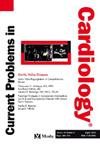Expanding the concept of pharma-cise: A graphical primer for clinicians, researchers and industry
IF 3.3
3区 医学
Q2 CARDIAC & CARDIOVASCULAR SYSTEMS
引用次数: 0
Abstract
A human’s ability to transfer oxygen from the environment to skeletal muscle and conversely remove carbon dioxide from skeletal muscle back to the environment during physical exertion is a critical representation of healthy longevity and functional capacity. Cardiorespiratory fitness (CRF) is the accepted construct for the assessment of oxygen consumption (VO2) and carbon dioxide production (VCO2) – CRF is most accurately quantified through cardiopulmonary exercise testing (CPET) in the clinical setting. All pharmacological interventions, from experimental to approved and on the market, are meant to impact one or more human physiological processes. In this context, the graphical primer on the physiological process of VO2 and VCO2 presented herein should facilitate the thought process on how pharmacology interacts with the factors that influence the capacity for physical exertion. Exercise is medicine and CRF is a vital sign and as such, the former should be prescribed to all capable individuals, and the latter should be considered a primary efficacy outcome measure in clinical and research settings. There is an opportunity to synergize and further enhance patient outcomes when pharmacologic and exercise interventions are considered integrated and in combination– a concept recently defined as pharma-cise – the graphical primer is proposed to facilitate application of this concept.
扩展制药概念:临床医生,研究人员和行业的图形入门。
在体力消耗过程中,人体将氧气从环境转移到骨骼肌,并将二氧化碳从骨骼肌移回环境的能力是健康长寿和功能能力的重要代表。心肺适能(CRF)是评估氧气消耗(VO2)和二氧化碳产生(VCO2)的公认结构-在临床环境中,通过心肺运动试验(CPET)最准确地量化CRF。所有的药理学干预,从实验到批准再到市场上,都是为了影响一个或多个人体生理过程。在这种情况下,本文提供的VO2和VCO2生理过程的图形入门应该有助于思考药理学如何与影响体力消耗能力的因素相互作用。运动是一种药物,而CRF是一种生命体征,因此,前者应该给所有有能力的人开处方,后者应该被视为临床和研究环境中的主要疗效指标。当药理学和运动干预被认为是整合和结合时,有机会协同作用并进一步提高患者的结果-最近定义为药学的概念-提出图形引物以促进这一概念的应用。
本文章由计算机程序翻译,如有差异,请以英文原文为准。
求助全文
约1分钟内获得全文
求助全文
来源期刊

Current Problems in Cardiology
医学-心血管系统
CiteScore
4.80
自引率
2.40%
发文量
392
审稿时长
6 days
期刊介绍:
Under the editorial leadership of noted cardiologist Dr. Hector O. Ventura, Current Problems in Cardiology provides focused, comprehensive coverage of important clinical topics in cardiology. Each monthly issues, addresses a selected clinical problem or condition, including pathophysiology, invasive and noninvasive diagnosis, drug therapy, surgical management, and rehabilitation; or explores the clinical applications of a diagnostic modality or a particular category of drugs. Critical commentary from the distinguished editorial board accompanies each monograph, providing readers with additional insights. An extensive bibliography in each issue saves hours of library research.
 求助内容:
求助内容: 应助结果提醒方式:
应助结果提醒方式:


